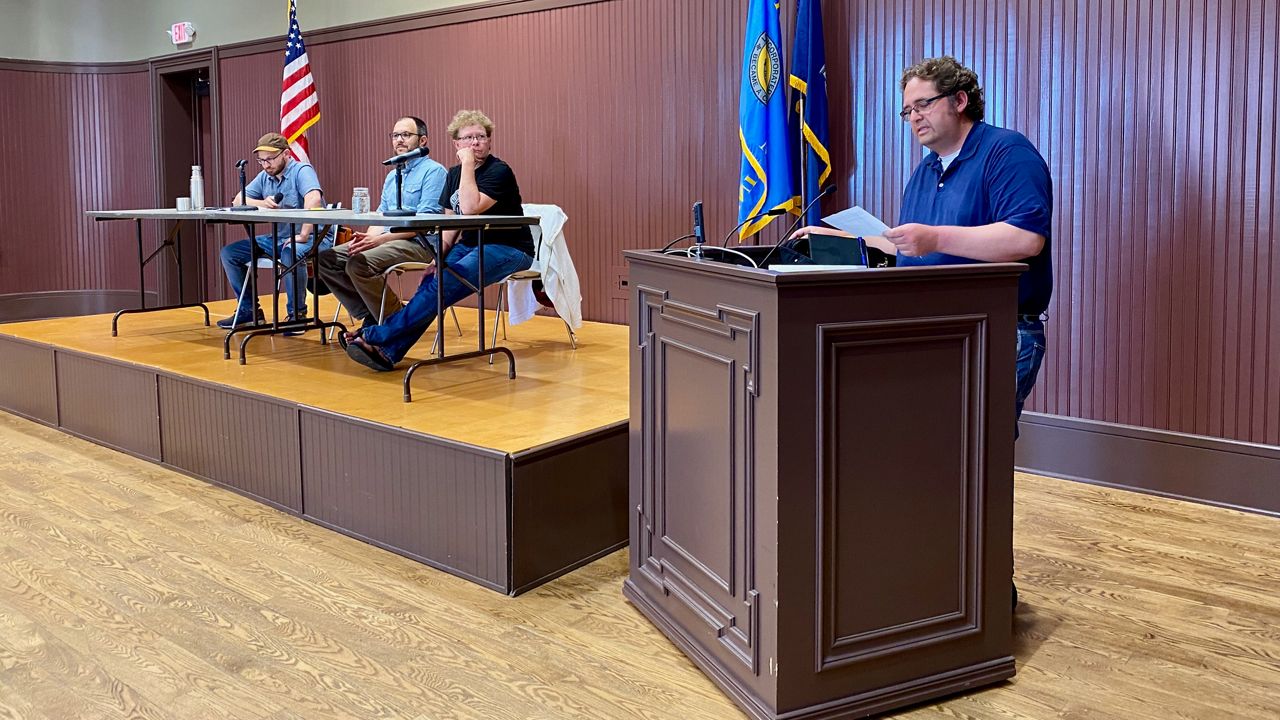Karen Gagne has been homeless four or five times in her life and has lived in both Lewiston and Portland.
She told a Lewiston panel Monday night that Portland offers places for people to go during the day, so those without permanent housing can do laundry, plan their day or just sit down inside a building. But those options are severely limited in Lewiston, a problem she hopes the Mayoral Ad Hoc Shelter Committee addresses in the coming months.
“I never lived on the streets, I didn’t sleep on a bench,” she said during the committee’s second listening session. “At least I was in a shelter and had a mat to lay on. It was one of the most humbling and educational experiences in my life.”
Gagne, 57, is now studying to get her master’s degree in social work and offered to help city officials in any way she can as they explore options to meet the needs of the homeless in Lewiston.
Committee co-chairwoman Amy Smith said the group started meeting in March when Mayor Carl Sheline formed the group. A month later, the Lewiston City Council voted 4-3 to put in place a six-month moratorium on low- or no-barrier shelters.
After listening to the public and gathering data, the group will present recommendations to the city council on July 19 and get feedback with the hope that a vote can be taken in September.
“For me, it’s been really enriching to understand the breadth and scope of people’s feelings and questions on this topic,” Smith said.
Co-chairman Craig Saddlemire said the committee wanted to hear from as many people as possible and that they have solicited comments from many who are working on the issue.
“We want to make recommendations to the council to address what is a very present and real issue of folks who are unhoused and face danger as a result,” Saddlemire said. “This is a real problem that the community faces.”
Saddlemire explained that one of the challenges of the committee is to define what a low-barrier or no-barrier shelter means to Lewiston. Some shelters require identification, that people not have any criminal convictions, or are sober or participating in programs to address substance use disorder.
The council has also expressed an interest in learning about ordinances it might want to pass or whether it should institute a licensing system, Saddlemire said.
Another audience member who spoke, Sonia Bermonty, said she is a Sabattus resident who ministers to the homeless in Lewiston. As a teen in New York, she was homeless and experienced things that still give her nightmares, she said.
Her message to the panel is that many people who are homeless are not addicted to drugs or alcohol. Some of them lost homes in a fire, others are struggling to pay the rent.
“A big misconception I get all the time is that I’m wasting my time with a bunch of drug addicts and alcoholics, and I’m here to tell you that’s not true,” she said.
Bermonty echoed the sentiment of Gagne that in addition to overnight shelters, Lewiston needs to offer places for people to shower and do laundry during the day.
“If you go to a job interview and you stink and you are grubby, that’s all people see,” she said. “I don’t care what anyone says. That’s what they are looking at.”
Landlord Jay Allen, who said he’s got more than 60 rental units in Lewiston, said the committee can’t ignore the crime and drug abuse that is happening downtown. He said his tenants are being bothered by some of the homeless who are outside his units.
And he said the state needs to step in to help.
“The meth heads that are criminals are still going to be meth heads that are criminals,” he said. “When you get pushback about the homeless shelter, it’s not about the people, the family, the mentally ill guy talking to himself. I think it would be helpful to talk about what the real problem is. I don’t think there’s any disagreement about helping people who are really down on their luck.”
Bermonty pushed back, saying it’s unfair to categorize all homeless people as criminals. Allen said that’s not what he said and stormed out of the meeting.
Saddlemire said the committee’s job is to help as many people as possible, while understanding that not all problems can be solved. He said the public often sees the more visible signs of substance use disorder and mental illness, which are problems for a small percentage of the overall homeless population.
Smith said Allen expressed a frustration felt by many people about what’s going on downtown. Some of it is not related to the housing crisis, she said, but the shelter discussion has become a forum for people to talk about other problems facing the city.
“There are people – not necessarily homeless people — but definitely people in the downtown who regularly abuse and trash the housing and make it feel unsafe for kids who are going to school,” she said. “That is an absolute reality of our downtown.”



